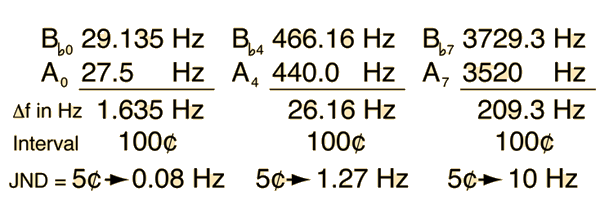Pitch Details Related to Cents
Evaluating the just noticeable difference in pitch by the "nickel's worth" rule is convenient, but as you might expect it is an oversimplification. Rossing describes measurements of pitch discrimination with pure tones at about 80 dB for frequencies between 1 and 4 kHz. The jnd is found to be about 0.5% of the pure tone frequency, which corresponds to about 8¢ . He also states that the jnd has been found to depend upon the frequency, the sound level, the duration of the tone, the suddenness of the frequency change, the musical training of the listener, and the method of measurement. The real world can rarely be accurately characterized by simple rules.
Rossing also reports that the critical bandwidth (related to loudness perception) is about 30 times the jnd for pitch, suggesting that both are related to the regions of excitation along the basilar membrane of the inner ear.
|
Index
Temperament and musical scales
Reference
Rossing
Science of Sound, 2nd ed. |





